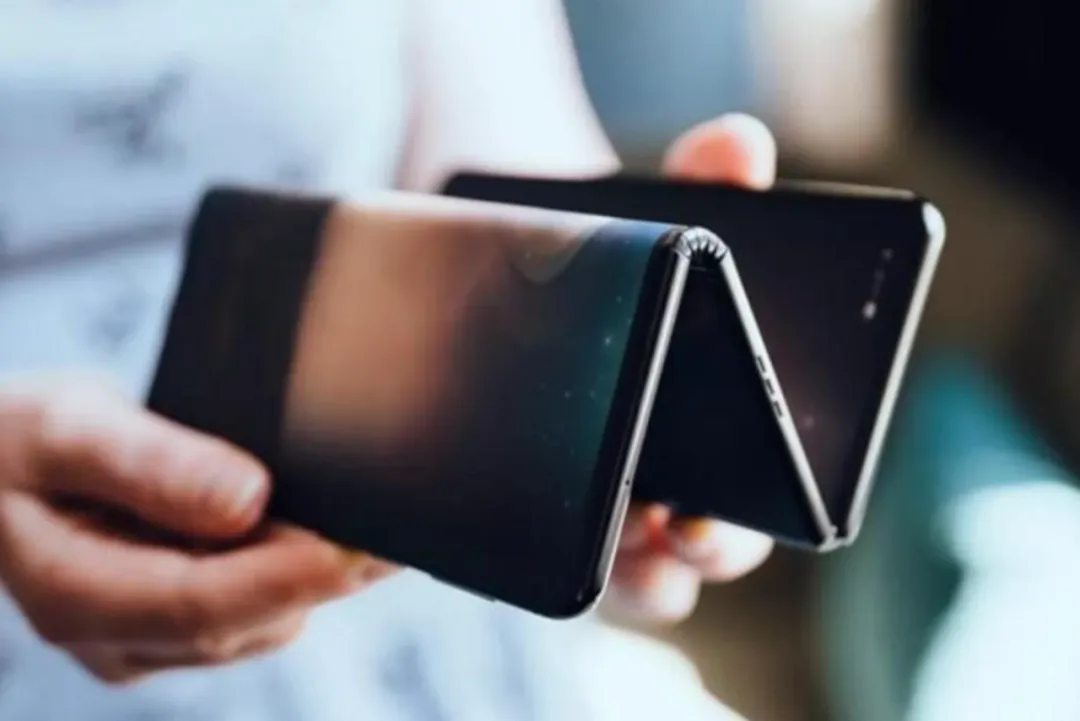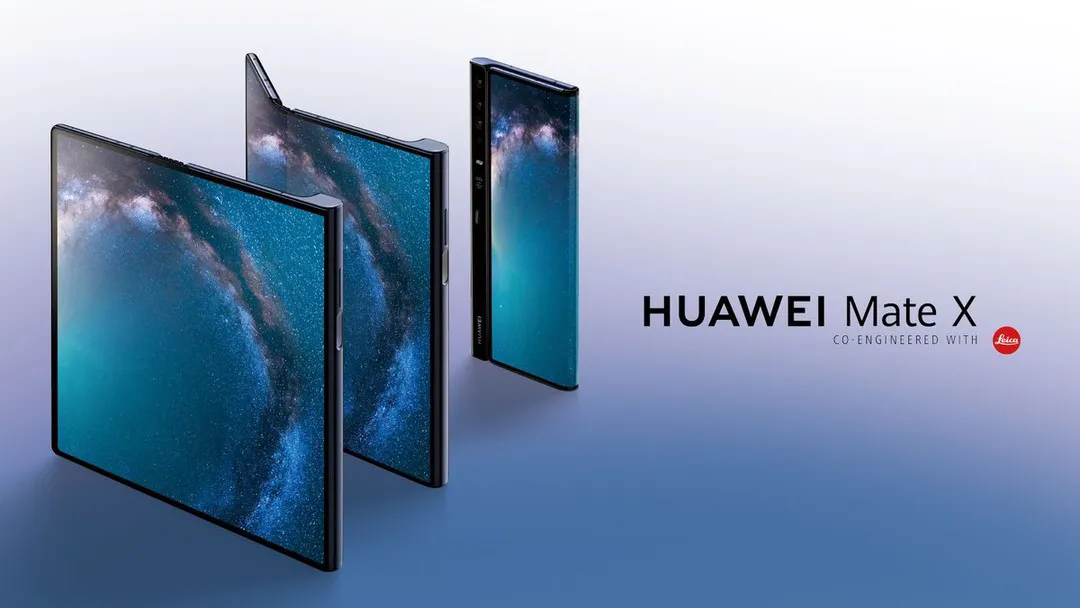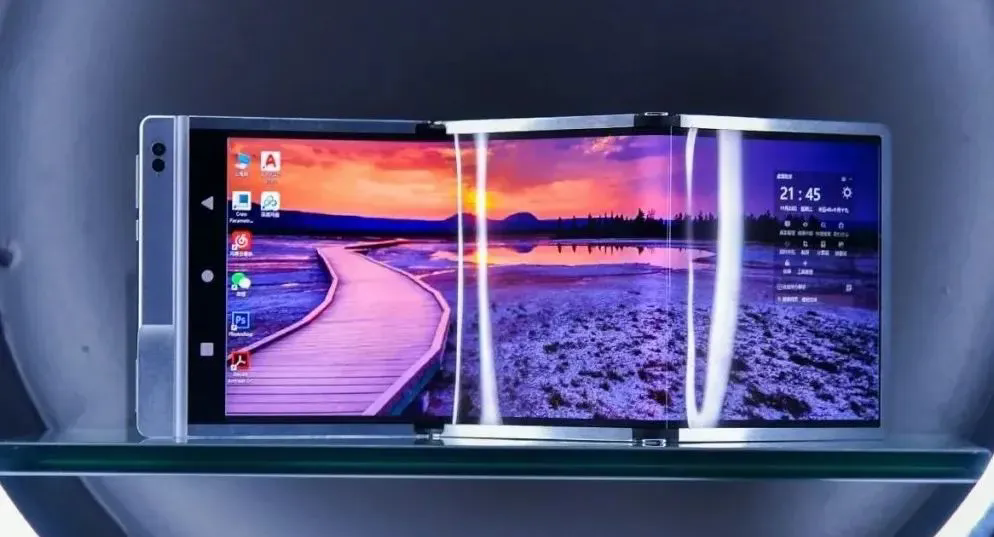Keyword: CNC machining parts Auto Spare Parts Milling machining Turning parts Grinding machining
Contact person: Nick Lee
Phone: (86) 15362887736
E-mail: sales03@dgmtwj.cn
Tel: (86) 769-88388276
Factory: No.2, Baidai Industrial Park, Daojiao Town, Dongguan, China ,
Editor's Note
The competition for foldable screens has entered a white-hot stage, but Huawei seems to be the biggest winner. According to Huawei Terminal, Huawei's three-folding screen mobile phone will be unveiled at Huawei's press conference held on the afternoon of September 10, 2024.
The "2024 Folding Screen Mobile Phone Market and Consumption Trend Research Report" released by iResearch Consulting shows that in the first half of 2024, China's folding screen mobile phone market will show a "one pole and many strong" trend. As the first manufacturer whose product line covers all forms of horizontal folding, horizontal folding, and vertical folding, Huawei still occupies half of the market, accounting for 42% of the market share. In the ultra-high-end market above 10,000 yuan, Huawei's share is as high as 67%.
Compared with previous years, it is not easy to lead the folding screen market this year. In 2024, under the premise of the gradual convergence of the supply chain, Honor will make the horizontal folding screen the "thinnest in the world", OPPO and vivo will pursue the imaging effect of the straight-panel machine, and Xiaomi's latest vertical folding screen will be a trick in form... Each company has tried to use the folding screen as a heavy weapon to impact the high-end, but failed to break Huawei's iron wall.
To a large extent, this is the comprehensive result of brand influence, technological innovation, accurate user insights and excellent product experience. As one of the earliest mobile phone manufacturers to enter the folding screen field, Huawei has the most comprehensive R&D and industrial chain layout in the industry. This also determines that Huawei can make bolder decisions when its peers generally choose a cautious strategy.
But Huawei does not seem to be satisfied with the existing competition in the folding screen market. With Yu Chengdong forwarding the news about Huawei's three-folding screen on Weibo, the news that Huawei is about to release a three-fold folding screen mobile phone has also caused heated discussions recently.
The market has both expectations and doubts about this three-fold screen. On the one hand, just like Apple Vision Pro, the public who need novelty have long been looking forward to a new form of terminal equipment; on the other hand, in an era when the existing folding screen has not yet achieved wide coverage, it is necessary to open up another track for a product that is more challenging in terms of technology and cost and has a more unimaginable form.
Every new form of terminal has to face similar doubts. When the iPhone was first introduced, many people thought that a mobile phone without a keyboard and a non-replaceable battery would not cause any waves, and it was even described as a "stupid design." But it was this product that was considered worthless that subverted the lifestyle of all mankind and led to the takeoff of countless emerging industries.
Faced with the unknown, Huawei and the folding screen industry chain started a gamble for the future.
01 Triple folding screen, the ultimate form of mobile phone?
If we look back at the history of mobile terminal development, hardware manufacturers have been committed to the same thing in the past few decades: to use smarter ways to make portability and productivity more closely linked.
In terms of hardware, from BP machines, mobile phones, feature phones to today's smart phones and folding screens, lightweight and easy-to-carry mobile terminals continue to pursue larger screens, while PCs and tablets with strong productivity attributes are gradually developing towards lightweight and convenient. In terms of software, terminal manufacturers have also begun to frequently emphasize cross-terminal experience transfer, and giving more functions exclusive to PCs and tablets to mobile phones has also become an inevitable trend.
Regardless of how mobile terminals evolve, the screen is always the most important interactive device. Therefore, mobile phone manufacturers led by Huawei have launched folding screens, which make the mobile phone screen larger, improve portability through folding, and achieve the same lightness and thinness as candy-bar phones with the cooperation of industrial chain technology. The essence of folding is to reshape the form to balance the compactness of volume control and the extreme of large screen.
The change of screen form has brought innovations to the smartphone experience, such as multi-screen operation in office scenarios and a more immersive viewing experience. Although folding screens were once questioned as "pseudo-demand" when they first came out, it was believed that folding was just another form of flip phone. But after the real experience, it is difficult for users of folding screens to return to candy-bar phones. The reason is that users can get incremental experiences such as large screen, split screen, hovering, etc. that candy-bar phones do not have without sacrificing extra costs.
But to become a productivity tool like PC, the existing folding screens still have a certain distance. The common folding screen is close to square in proportion after unfolding, and its size is limited, which determines that many visual experiences on tablets/PCs cannot be fully replicated on folding screens. In addition, the application ecosystem rooted in folding screens is still lacking, and the touch screen operation of folding screens is not as efficient and accurate as the keyboard and mouse operation of PC computers.
Without sufficient hardware support, the software can never play its maximum role, and it is impossible to achieve a real innovation in the experience. To break through the functional limitations of existing mobile terminals, making the screen larger seems to be the only way, and from the existing folding screen technology, the three-folding screen may be the most user-friendly and feasible solution in terms of mass production capacity.
It is also worth mentioning that the three-folding may be the best mobile phone form in the AI Phone era. After the popularity of generative AI, almost all hardware manufacturers are seizing the opportunity to change human-computer interaction and are committed to combining AI with hardware such as headphones, glasses, and brooches. However, due to the computing power limitations of a single hardware and the lack of major breakthroughs in battery technology, all AI hardware still cannot do without the core of smartphones. At least in the next 5 to 10 years, mobile phones will still be the most important mobile terminals and hardware devices suitable for exerting AI capabilities. The innovative experience brought about by the expansion of the screen will also provide more room for AI functions to play.
2 Everyone can think of it, but they can't do it
Almost all terminal manufacturers realize that screen size is the key to breaking through the folding screen application ecosystem. As early as 2020, TCL demonstrated a concept phone with a three-fold design. Among overseas manufacturers, Samsung also demonstrated a prototype of a three-fold screen, and in 2023, it demonstrated two three-fold concept phones, Flex S and Flex G.

The three-fold solution displayed by TCL, source: TCL
But mass production is a huge challenge. Even Samsung, which has a detailed and in-depth supply chain layout, has not yet produced a mass-produced three-fold phone. The technical challenges faced by the three-fold are complex: if you want to fold it again, the weight and thickness of the body will inevitably increase significantly, and the expansion of the screen area also brings greater bending and battery life tests. In addition, the three-fold screen has to adopt a double hinge structure, which not only increases the complexity of the mechanical structure, but also increases the risk of damage.
Another concern is whether the three-fold screen can quickly form a commercial closed loop. The application of new materials and processes will inevitably increase the design and manufacturing costs, and it is also likely to be accompanied by a higher price. Some people even estimate that the price of Huawei's first three-fold screen will be more expensive than before. And because the screen itself is relatively fragile, many consumers are worried that the three-fold will increase the cost of maintenance. To some extent, this has also hindered some manufacturers from deciding to invest further.
But if we go back five years, the first generation of folding screens also faced similar problems. Due to the immaturity of manufacturing technology and new materials, the yield of folding screens was much lower than that of traditional straight-screen phones at the time, and they were very thick and heavy. The folding screen models on the market all had obvious creases, and the application ecosystem was also barren.
However, in less than five years, Chinese manufacturers and supply chains represented by Huawei quickly solved these constraints. For example, the self-developed water drop-shaped hinge achieves an almost seamless folding form and also ensures the flatness of the inner screen. The first application of ultra-high strength such as bulletproof steel and aerospace-grade wing aluminum improves the durability of the hinge, and Kunlun glass largely solves the problem of the screen being fragile after a fall.
Over the past five years, Huawei's R&D investment in folding screens and its supply chain cooperation experience in technology and materials have become the source of Huawei's confidence in betting on the three-fold, and have also determined that in the field of three-fold, Huawei is the only manufacturer that can achieve a balance in yield, cost and technological leadership. Yu Chengdong once revealed Huawei's new generation of folding screens in the "Walking with Hui" live broadcast room last month. He described: "The next generation of folding screens, others can think of it, but they can't make it. We have been thinking about it for five years, and it's finally coming out." It is not clear what plan Huawei will take. But from Yu Chengdong's Reuters picture, the actual machine body is close to the thickness of the current folding screen, and it does not look thick. The screen size of nearly 10 inches can also bring better visual effects. In terms of applica
3. The perfect moment for the domestic supply chain to overtake.
For all smartphone manufacturers, foldable screens are not the most competitive battlefield, especially in the context of the smartphone market still being in a downturn. Focusing on an innovative product is not the best consideration in terms of business. But just like Huawei's launch of the Mate X five years ago, the greatest significance of this product may not lie in market competition, but in betting on people's more technological and convenient lifestyles in the future, and in making progress together with the domestic supply chain.

To some extent, the supply chain may be more looking forward to the arrival of the three-fold screen than users. Since Yu Chengdong's three-fold Reuters was exposed, the soaring stock prices of domestic folding screen supply chain-related companies may explain everything. But the value of the three-fold is certainly not limited to the stock price, but a larger market space, and it is also an excellent opportunity to gain a leading position in the global industrial chain competition.
What can a new form of mobile terminal bring to the industrial chain? The first generation of folding screens is the best example. In 2019, when folding screens were just mass-produced, the supply of key components such as hinges, OCA glue, panels, and polarizers almost entirely relied on Japanese and Korean manufacturers. However, with the bold attempts of manufacturers such as Huawei, the booming sales of folding screen mobile phones in China have nurtured the domestic supply chain. Now in the entire folding screen mobile phone industry chain, local manufacturers have basically completed the full range of domestic substitution.
At the beginning of entering the folding screen industry, Huawei boldly adopted the BOE OLED screen, whose production line was not mature and was not favored by the outside world, when it was unable to purchase overseas screens. Five years later, due to the hot sales of Huawei's foldable screens, BOE's OLED screen shipments increased significantly. The resulting revenue and profit returns led to an increase in R&D investment. As the technology continued to mature, it began to supply other Android manufacturers, even achieving lower costs than Korean manufacturers.

DSCC data shows that with the increase in sales of domestic folding screens, in the fourth quarter of 2023, BOE's foldable panel shipments surpassed Samsung for the first time and became the world's first. This is a typical case of domestic manufacturers helping the domestic supply chain take off. Today, such scenes are also being staged in more industries.
Another key component of the folding screen is the glass cover. Initially, only Japanese and Korean manufacturers had mature production capabilities for folding screen CPI covers, and there was no domestic supplier of UTG covers that were better in screen scratch resistance and visual effects. With the joint efforts of Huawei and the supply chain, the UTG cover was successfully localized, and Huawei Pocket 2 used Kaisheng Technology's UTG cover for the first time. It is reported that Huawei's three-fold screen will also use Kaisheng Technology's UTG cover, and the cost can be controlled to almost the same as the CPI cover.
The imagination space brought by the three-fold to the industrial chain may be greater. First of all, it will undoubtedly promote the large-size trend of OLED, and is also expected to promote the development of domestic large-size OLED screen production lines. According to people familiar with the matter, Huawei's three-fold screen will also be equipped with a new type of carbon fiber material. Huawei first introduced carbon fiber material in Mate X3 for the panel support under the folding screen, which is significantly better than the existing titanium alloy material in terms of lightness and thinness.
If the overseas industrial chain has taken the lead in the first generation of folding screens because it started earlier, then the three-fold screen is likely to rewrite this situation. With the approach of Huawei's three-fold screen, Chinese terminal manufacturers are likely to be the first to achieve commercial verification and scale in the three-fold field, which will also drive the technical maturity and cost reduction of the domestic industrial chain. Some media reported that Apple will launch a folding screen at the end of 2026. It can be concluded that the foldable iPhone will also deeply embrace supply chain manufacturers from China.
From the current popularity, it can be predicted that although the price must not be low, Huawei's three-fold screen mobile phone will be an unprecedented event after it goes on the market. As mentioned at the beginning of the article, the advent of all new forms of products will be questioned, but it is obviously necessary to try. As long as it is successfully verified in a small part of the market, it can achieve a closed business loop, have the opportunity to iterate and upgrade, and achieve a more ideal experience.
This world allows all failed attempts, but it does not allow not taking the first step.